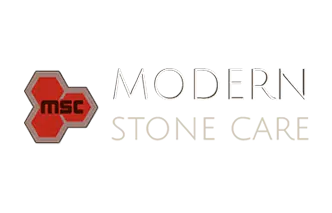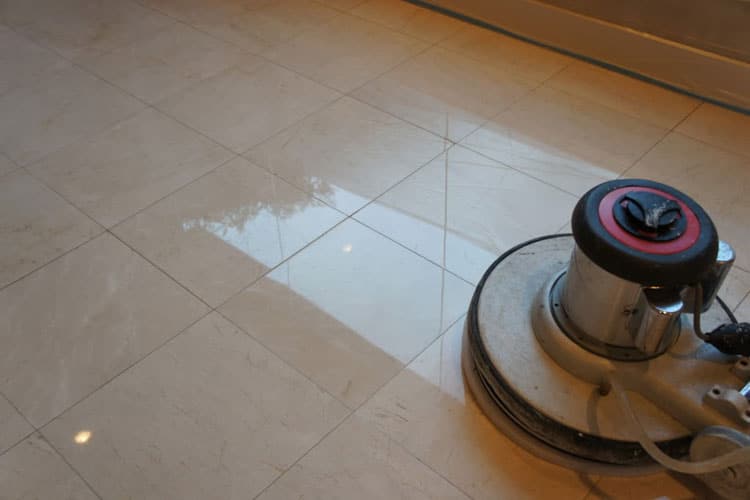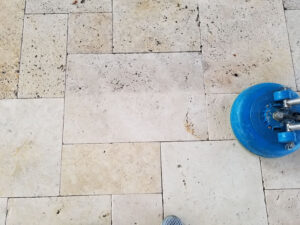Marble is a timeless and elegant choice for various surfaces in homes and commercial spaces, known for its beauty and durability. However, its porous nature makes it vulnerable to staining, which can mar its appearance. Modern Stone Care in Houston specializes in restoring stained marble, bringing back its natural beauty and ensuring it remains a stunning feature in your space. This blog will delve into the intricacies of marble staining, effective prevention methods, and the benefits of professional marble care services.
The Nature of Marble and Its Susceptibility to Staining
Marble is a metamorphic rock composed primarily of calcite, a mineral form of calcium carbonate. Its unique patterns and colors result from various impurities like clay, sand, iron oxides, or silt, which were present in the limestone before it underwent metamorphosis. These impurities give marble its characteristic veining and aesthetic appeal.
However, the beauty of marble comes with a caveat: its porosity. The small pores and tiny fissures in marble make it highly susceptible to absorbing liquids and other staining agents. Even though polished marble has a slightly lower porosity than honed marble, both types can still stain if not properly maintained.
Common Causes of Marble Stains
Marble stains can stem from a variety of sources, each requiring a specific approach for effective removal. The most common types of stains include:
- Organic Stains: These result from everyday items like coffee, tea, wine, fruit, and other food items. Organic stains are usually brownish and can be challenging to remove if they penetrate deeply into the marble.
- Inorganic Stains: These are caused by substances like ink, dyes, and metals. Rust stains from metal objects left on marble are particularly stubborn and often require professional intervention.
- Biological Stains: Mold, mildew, and algae can grow on marble surfaces, especially in damp environments like bathrooms and kitchens. These stains can be green or black and indicate a need for both stain removal and preventive measures to control moisture.
- Oil-Based Stains: Cooking oils, lotions, and other greasy substances can seep into marble, creating dark spots that are difficult to clean with standard household methods.
- Etching: Although not a stain per se, etching occurs when acidic substances like lemon juice, vinegar, or even some cleaning products come into contact with marble. These acids react with the calcium carbonate in marble, leaving dull spots or rings that can resemble stains.
Preventive Measures to Protect Marble Surfaces
Preventing stains on marble is far more effective than trying to remove them after they occur. Here are some strategies to keep your marble surfaces looking pristine:
Sealing the Marble: Applying a high-quality sealant to marble surfaces can significantly reduce their porosity, making them less prone to staining. Sealing should be done regularly, especially in high-traffic areas or where the marble is frequently exposed to spills and moisture.
Prompt Cleaning: Address spills immediately by blotting (not wiping) them with a soft cloth. Use a pH-neutral cleaner specifically designed for marble to avoid damaging the stone. Acidic or abrasive cleaners can etch the surface, leading to more extensive damage.
Using Coasters and Mats: Protect marble countertops and tables by using coasters for beverages and mats under items like vases, toiletries, and kitchen utensils. This simple practice can prevent many common stains and scratches.
Regular Maintenance: Routine cleaning and periodic professional maintenance are crucial for preserving the beauty of marble. Dusting, damp mopping, and annual resealing are essential steps in a comprehensive marble care regimen.
The Professional Approach to Stain Correction
When stains occur despite preventive measures, professional restoration services become invaluable. Modern Stone Care in Houston employs advanced techniques and specialized equipment to tackle even the most stubborn stains, ensuring your marble surfaces regain their original luster.
Assessment and Identification: The first step in the professional stain removal process is a thorough assessment to identify the type and extent of the stain. This is crucial because different stains require different treatments. For example, an organic stain from coffee will need a different approach than a rust stain from a metal object.
Surface Preparation: Before any stain removal treatment, the affected area must be thoroughly cleaned to remove surface dirt and debris. This ensures that the stain removal process is more effective and prevents any additional damage during treatment.
Application of Poultices and Cleaners: A poultice is a paste made from a cleaning agent and an absorbent material like clay or paper. This paste is applied to the stained area, covered with plastic wrap, and left to dry. As the poultice dries, it draws the stain out of the marble. Depending on the severity of the stain, this process may need to be repeated several times.
Polishing and Honing: Once the stain is removed, the marble may require polishing or honing to restore its shine and smoothness. Polishing involves using diamond abrasives to achieve a glossy finish, while honing provides a matte or satin finish, depending on your preference and the marble’s use.
Sealing for Future Protection: After the stain removal and polishing, a high-quality sealant is applied to protect the marble from future stains. This sealant forms a barrier that reduces the stone’s porosity and makes it easier to clean spills before they penetrate deeply.
Unique Considerations for Different Marble Finishes
Different marble finishes require specific care and maintenance strategies. Understanding these differences can help in maintaining the appearance and integrity of your marble surfaces.
Polished Marble: Polished marble has a glossy, reflective surface that highlights the stone’s colors and patterns. While it is less porous than other finishes, it is more prone to showing scratches and etches. Regular cleaning with a pH-neutral cleaner and immediate attention to spills can help maintain its shine.
Honed Marble: Honed marble has a matte finish that is less reflective and more resistant to scratches. However, it is more porous than polished marble, making it more susceptible to staining. Regular sealing and cleaning are essential to keep honed marble looking its best.
Tumbled Marble: Tumbled marble has a rustic, aged appearance with rounded edges and a slightly textured surface. It is highly porous and often used in decorative applications like backsplashes and shower walls. Frequent sealing and careful cleaning are necessary to prevent stains and moisture damage.
Benefits of Professional Marble Care
Engaging professionals for marble care offers several advantages that go beyond what DIY methods can achieve:
Expertise and Experience: Professional marble care technicians have the knowledge and experience to identify and treat different types of stains effectively. They understand the nuances of marble and can tailor their approach to suit the specific needs of your surfaces.
Advanced Techniques and Equipment: Professionals use state-of-the-art equipment and advanced techniques to achieve the best results. This includes specialized cleaning agents, diamond abrasives for polishing, and high-quality sealants for long-lasting protection.
Time and Effort Savings: Professional marble care is more efficient and less time-consuming than DIY methods. The expertise and equipment professionals bring to the table mean that stains are removed more quickly and thoroughly, allowing you to enjoy your beautiful marble surfaces sooner.
Long-Term Protection: Regular professional maintenance, including cleaning, polishing, and sealing, can extend the life of your marble surfaces. This not only keeps them looking beautiful but also protects your investment by preventing costly damage and deterioration.
Choosing the Right Marble Care Service in Houston
Selecting a reputable marble care service is crucial to ensure the best results for your marble surfaces. Here are some factors to consider when choosing a marble care provider in Houston:
Reputation and Reviews: Look for a company with positive reviews and a strong reputation in the industry. Customer testimonials and online reviews can provide valuable insights into the quality of service and customer satisfaction.
Experience and Expertise: Choose a service provider with extensive experience in marble restoration and maintenance. Experienced technicians are more likely to achieve excellent results and handle any challenges that arise during the restoration process.
Quality of Products: Ensure that the company uses high-quality cleaning agents, abrasives, and sealants. The products used in marble care can significantly impact the results and the longevity of the treatment.
Customer Service: A reliable marble care service should offer excellent customer service, including clear communication, prompt responses, and professional conduct. A company that values its customers is more likely to provide a positive experience and satisfactory results.
Marble Correction in Houston, TX
Marble is a stunning natural stone that adds elegance and sophistication to any space. However, its porous nature makes it vulnerable to staining, which can detract from its beauty. Understanding the causes of marble stains, taking preventive measures, and engaging professional restoration services can help maintain the pristine appearance of your marble surfaces.
Modern Stone Care in Houston specializes in stained marble correction, offering expert services to restore and protect your marble. By combining advanced techniques, high-quality products, and exceptional customer service, they ensure that your marble surfaces remain a beautiful and valuable feature in your home or commercial space.
For more information or to schedule a consultation, contact us today. Let the experts handle your marble care needs and keep your surfaces looking pristine and beautiful.
Modern Stone Care
970 Bunker Hill Rd
Houston, TX 77024
(832) 814–2041
View our Google Business Listing
View our Facebook Page







